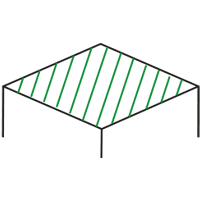1
Which filaments are compatible?
Filasophia can be used with ABS, ASA, CPE, HDPE, HIPS, Nylon, PC, PET, PETG, PLA, PP, PVC, PVDF, Glass and Carbon Fiber Reinforced materials.
Filasophia products are optimized for glass and metal. They may damage plastic print plates. For best performance, use Filasophia plates. Contact us for custom size requests.

ABS
ASA
CPE
HDPE
HIPS
PA6
PC
PET
PETG
PLA
PP
PVC
PVDF
TPE
TPU
–GF
–CF










